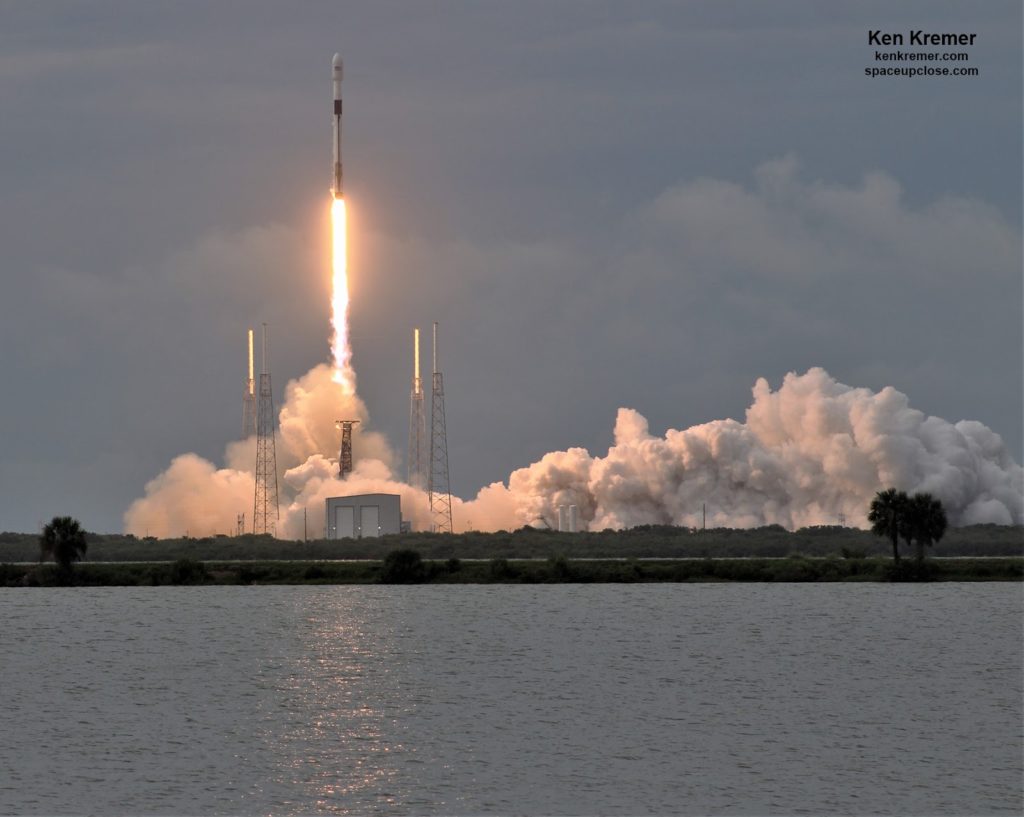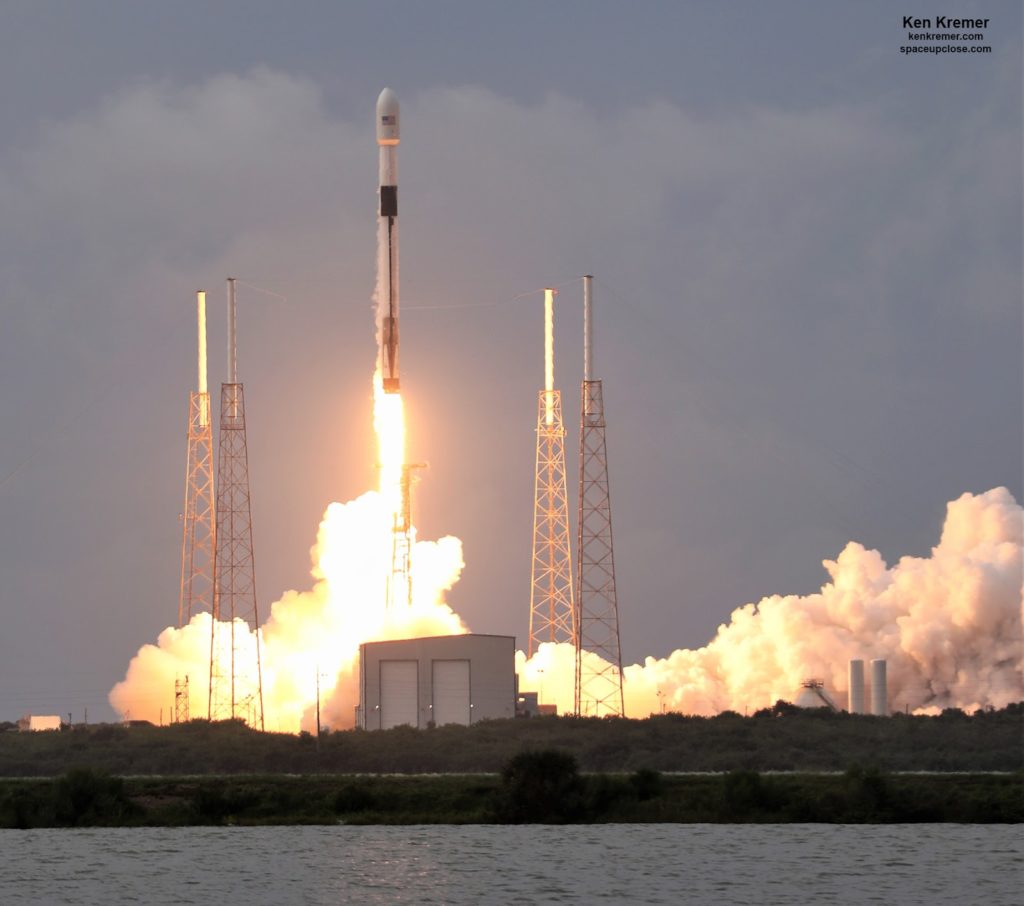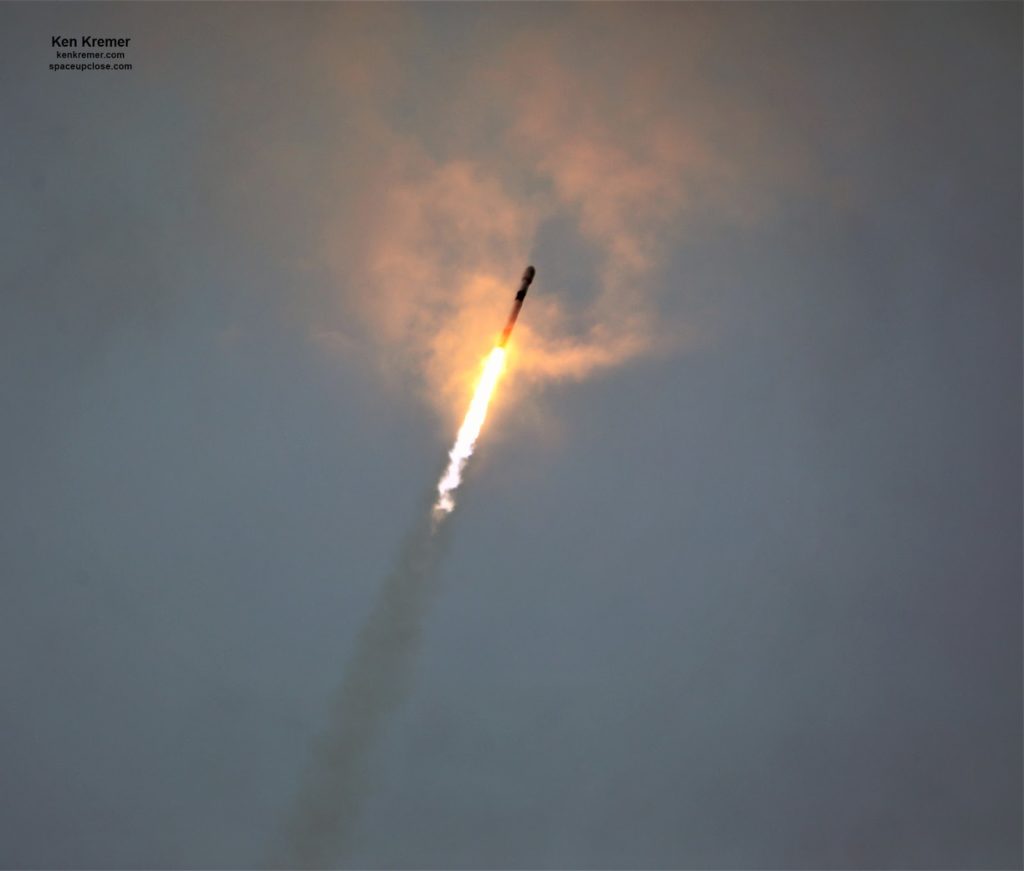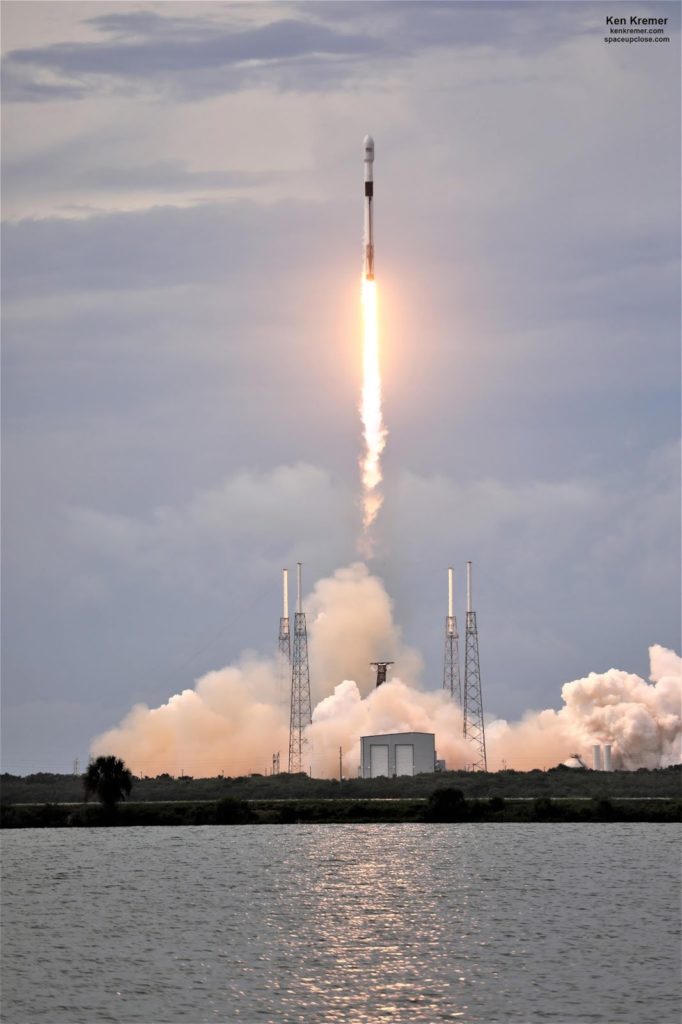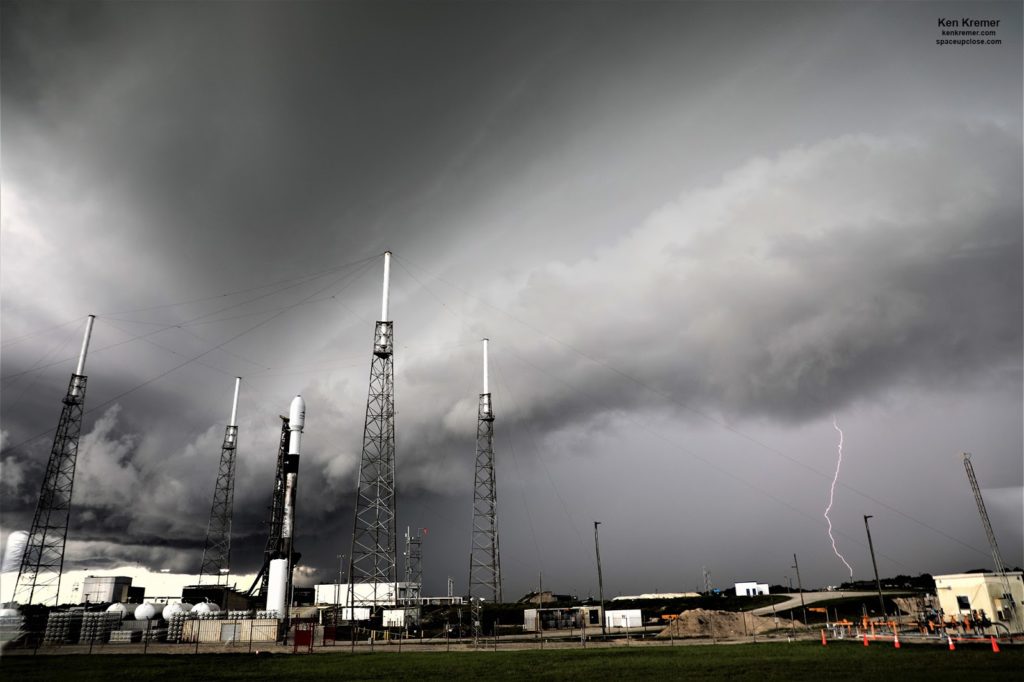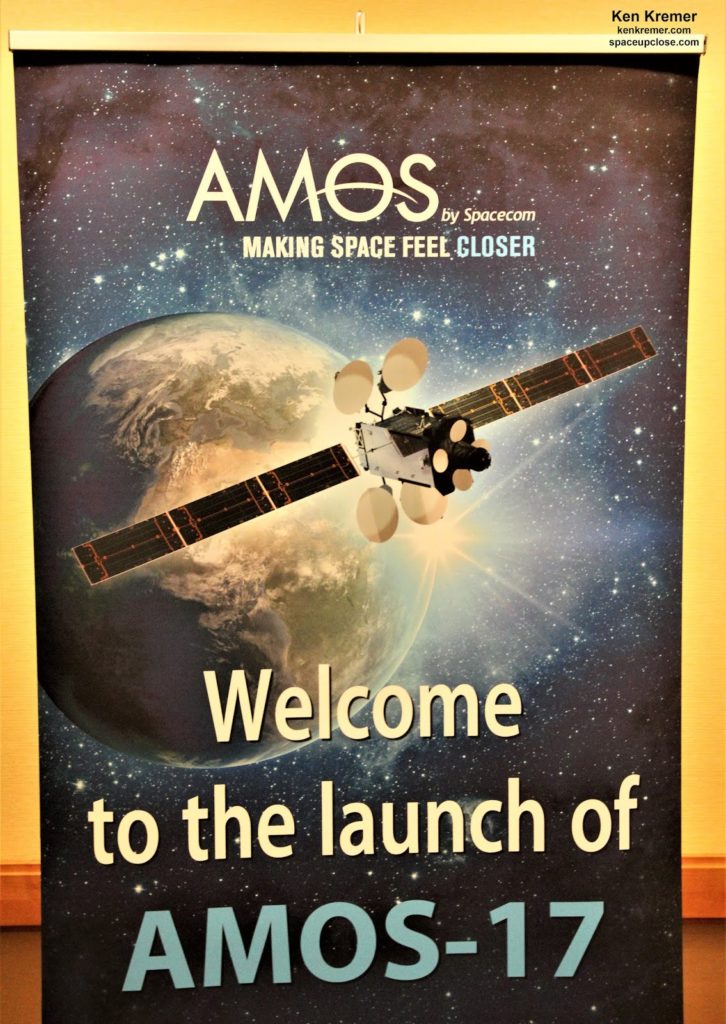Kremer — SpaceUpClose.com &
RocketSTEM – 6 August 2019
CAPE CANAVERAL AIR FORCE STATION, FL – After
day long threats of awful Space Coast weather and uncertainty on whether the
Air Force would give approval to SpaceX’s late in the flow request for launch
on the Eastern Range setting up back to back liftoffs with ULA’s Atlas V launch
on Thursday, SpaceX finally launched their Falcon 9 rocket carrying the Israeli-owned
AMOS-17 comsat this evening, Tuesday, August 6, but only after hours longs hefty
thundershowers and lightning strikes subsided for a brief period.
Until nearly the final moment it seemed the Falcon
9 launch would scrub for weather. But in the end it was another awesome display
of rocketry.
Indeed weather was red at the opening of the
launch window at 6:53 p.m. EDT and was pushed back 30 minutes to a new T-Zero
target.
Finally the skies cleared sufficiently and
the Falcon 9 roared off the launch pad at 7:23 p.m. EDT (2323 GMT) tonight, Aug. 6, from Space
Launch Complex 40 at Cape Canaveral Air Force Station in Florida. of the AMOS-17 comsat for Spacecom of Israel.
The 229 foot tall rocket roared off pad 40 with
1.7 million pounds of thrust from ignition of all 9 Merlin 1D first stage
engines. It soon disappeared into the initially wispy and soon thick layer of
low hanging clouds.
Enjoy our Space UpClose photo gallery of the
launch – which are limited this time.
There was so much poor weather leading up to
tonights launch that none of the media including Space UpClose were able to set
up our remotes cameras due to the Phase 3 lightning warnings in effect on and off
throughout the day.
is owned and operated by the Israeli Tel Aviv-based telecom company Spacecom.
It is designed with a 20 year lifetime and is based on Boeing’s 702 satellite series.
remarkable experience. The shared commitment to AMOS-17’s performance and
advanced digital payload package and meeting our tight time and resource goals
is a tremendous win for the Boeing team. We look forward to successfully
completing our joint mission when AMOS-17 commences operations,” said David
Pollack, CEO and president of Spacecom.
released from the Falcon 9 second stage approximately around 32 minutes after
liftoff into its desired orbit.
then in constant contact with its ground station as planned. During the next few
weeks, AMOS-17 will begin its testing and checkout processes in orbit.
the on-orbit tests and moving to its final position over Africa at 17 degrees East
later in 2019.
and video access and other communications services to underserved parts of
Africa as well as Europe and the Middle East.
failed in orbit in 2015 at 17 degrees East.
Fortunately, this launch proceeded far better compared to
the prior AMOS-6 satellite for Spacecom – which was destroyed in a catastrophic
explosion just minutes before engine ignition during a static fire test when
the payload was bolted on top of the Falcon 9.
placing commercial payloads on top of the Falcon 9 during static fire test
campaigns.
“This satellite cost us about $250 million in orbit. We
hope to recover it, within what is acceptable within the industry, in about six
or seven years,” Pollack told Space UpClose. “And then, because it’s 20 years,
we have hopefully a long life to make profit.”
But he avoided saying anything specific about the launch
contract terms or cost and how the AMOS-17 satellite would reach its final
orbit and why the booster had no landing legs or grid fins.
This particular Falcon 9 first
stage previously launched twice on the Telstar-19 VANTAGE and Es’hail-2
missions in 2018 and has once again
been refurbished for reuse.
But this launch will be the
boosters last launch.
For its third and final flight
this Falcon 9 first stage booster was flowen with no landing legs and no grid
fins.
Spacecom needs all the lifting power
of the Falcon 9 rocket to achieve its intended orbit for the heavy 6.5 ton AMOS-17
and maximize its lifetime in orbit.
SpaceX was able to recover one of
the two payload fairings using a parachute assisted and guided descent to the
GO Ms. Tree boat outfitted with a giant net – before it tpuches the seawaters of the
Atlantic Ocean.
CEO Elon Musk confirmed the successful
‘catch’ by tweet.
one after splashdown in the ocean with another ship -GO Navigator
year that the fairing cost about $6 million- which is roughly 10% of the cost
of a launch of $60 million
AMOS-17 has a fully fueled weight
of 6.5
metric tons (14,330 pounds).
Once in geostationary orbit AMOS-17 will be operating at 17
degrees east.
“AMOS-17 will expand and strengthen Spacecom’s coverage of
the growing satellites services market in Africa, with connectivity to the Middle
East, Europe and Asia. AMOS-17 will deliver Ka-band, Ku-band and C-Band
services,” according to Spacecom.
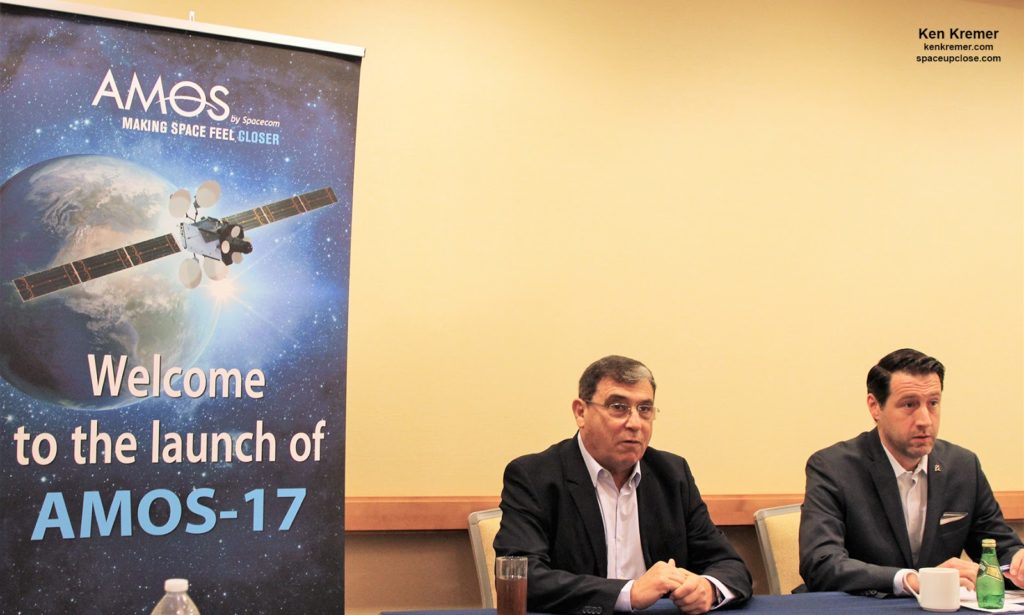 |
|
AMOS-17 prelaunch
media briefing Aug. 2, 2019 with David Pollack, Spacecom CEO; and Chris Johnson, Boeing President, Satellite Systems International. Credit: Ken Kremer/kenkremer.com/spaceupclose.com |
“AMOS-17 places us directly into the exciting
growth of Africa’s Sub-Saharan vibrant markets,” said Pollack.
“As a leading multi-regional
satellite operator, Spacecom is introducing the most technologically advanced
satellite with HTS beams to service Africa where AMOS-17 will deliver a large
selection of services to a variety of broadcast, broadband and telecom
clients.”
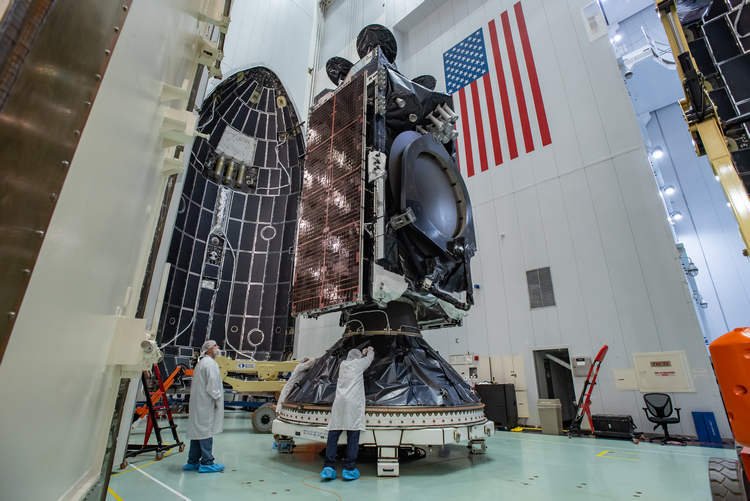 |
|
AMOS-17 prelaunch
media briefing Aug. 2, 2019 with David Pollack, Spacecom CEO; and Chris Johnson, Boeing President, Satellite Systems International. Credit: Ken Kremer/kenkremer.com/spaceupclose.com |
so that it can support many challenging missions,” said Chris Johnson,
president, Boeing Satellite Systems International, Inc.
“We are proud to support Spacecom in
their use of satellite technology to bring services, promote economic
development and foster a greater sense of connection to people around the
world.”
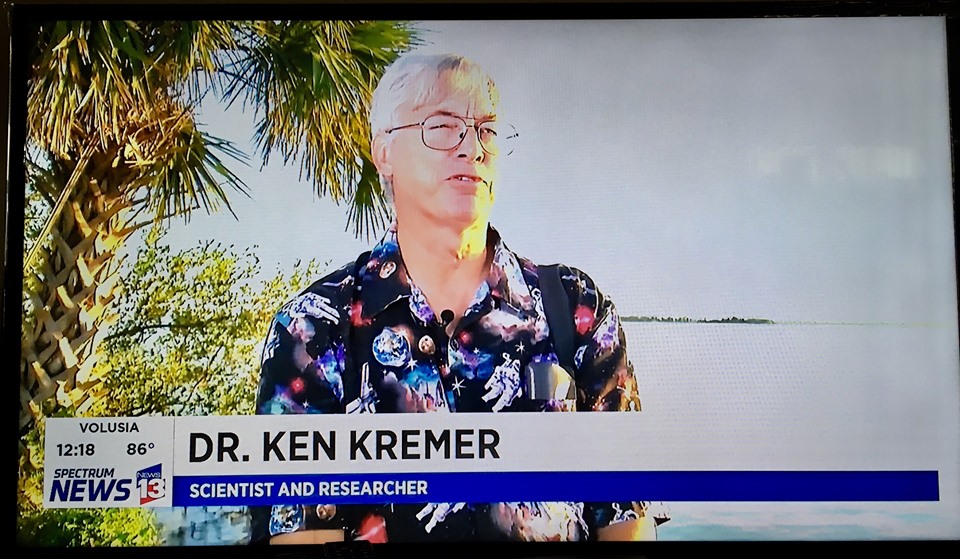 |
|
Dr Ken Kremer/Space Upclose interview with Spectrum News 13
about SpaceX AMOS-17 and ULA AEHF-5 back to back launches Aug. 6 and 8, 2019. Screenshot: Ken Kremer/Spectrum 13 |
Station for live reporting of the SpaceX AMOS-17 mission launch.
continuing onsite coverage of NASA, SpaceX, ULA, Boeing, Lockheed Martin,
Northrop Grumman and more space and mission reports direct from the Kennedy
Space Center, Cape Canaveral Air Force Station, Florida and Wallops Flight
Facility, Virginia.
Planetary science and human spaceflight news: www.kenkremer.com –www.spaceupclose.com – twitter
@ken_kremer – email: ken at kenkremer.com
KSC area, active in outreach and interviewed regularly on TV and radio about
space topics.
Ken’s photos are for sale and he is available for lectures and outreach events
to ISS, NASA Orion Ascent-2 Abort test
Falcon Heavy, NASA 2024
Moon landing goal, SpaceX Starlink-1, SpaceX Demo-1 launch/test failure, SpaceX Beresheet launch, NASA missions, ULA Atlas & Delta launches,
Northrop Grumman Antares, SpySats and more
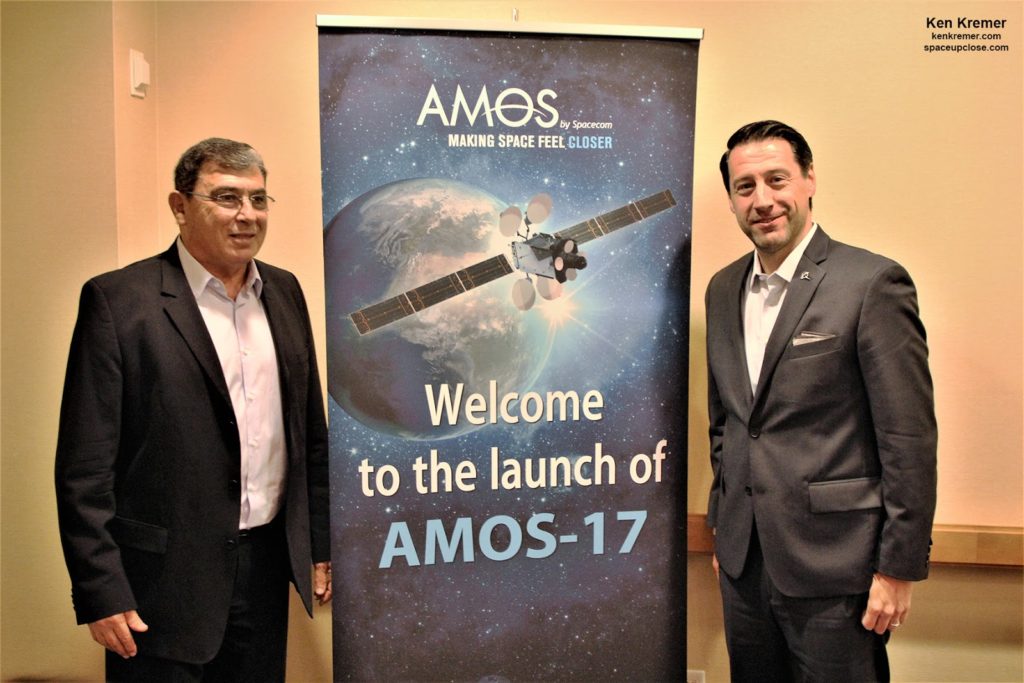 |
|
AMOS-17 prelaunch
media briefing Aug. 2, 2019 with David Pollack, Spacecom CEO; and Chris Johnson, Boeing President, Satellite Systems International. Credit: Ken Kremer/kenkremer.com/spaceupclose.com |


